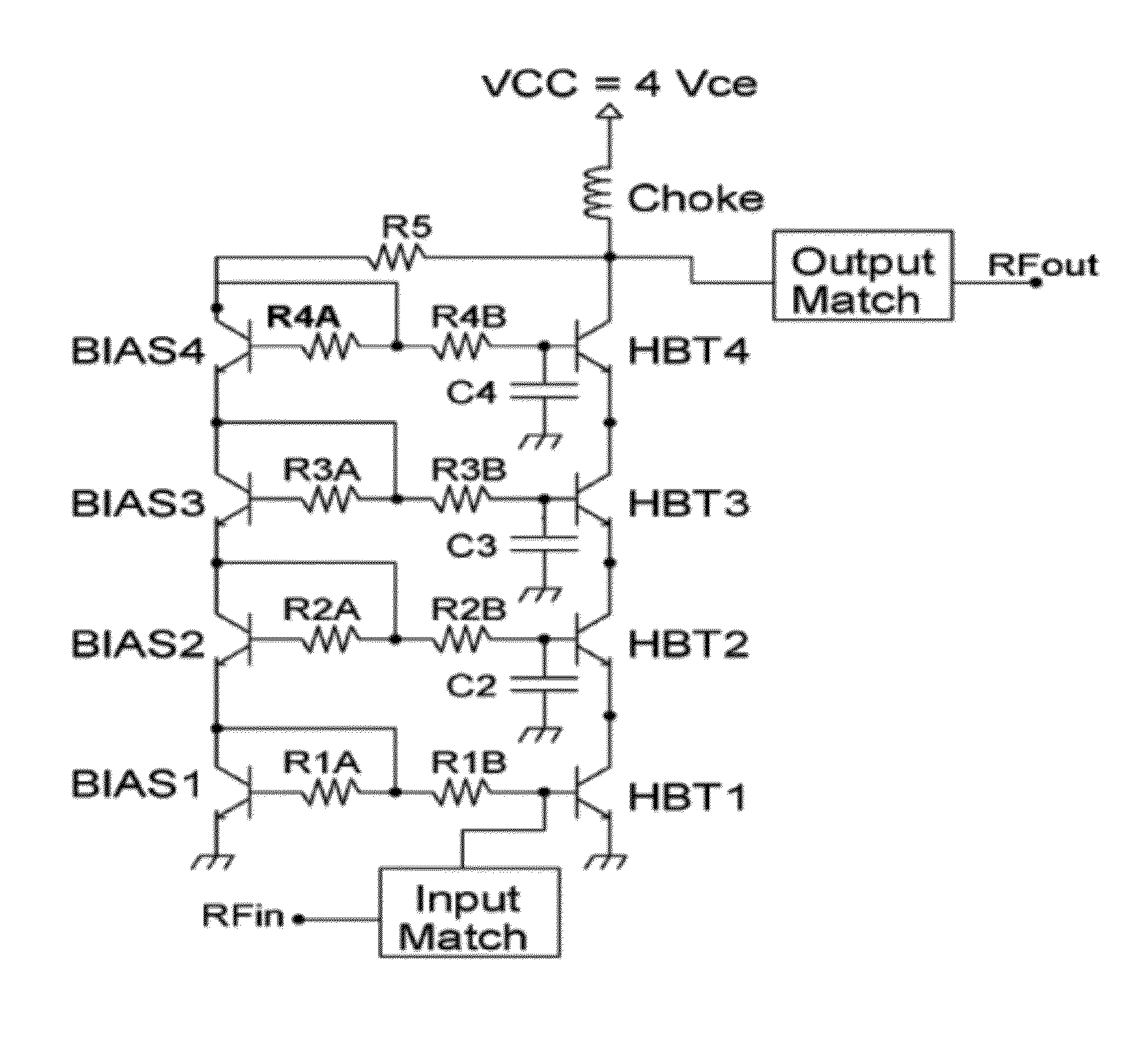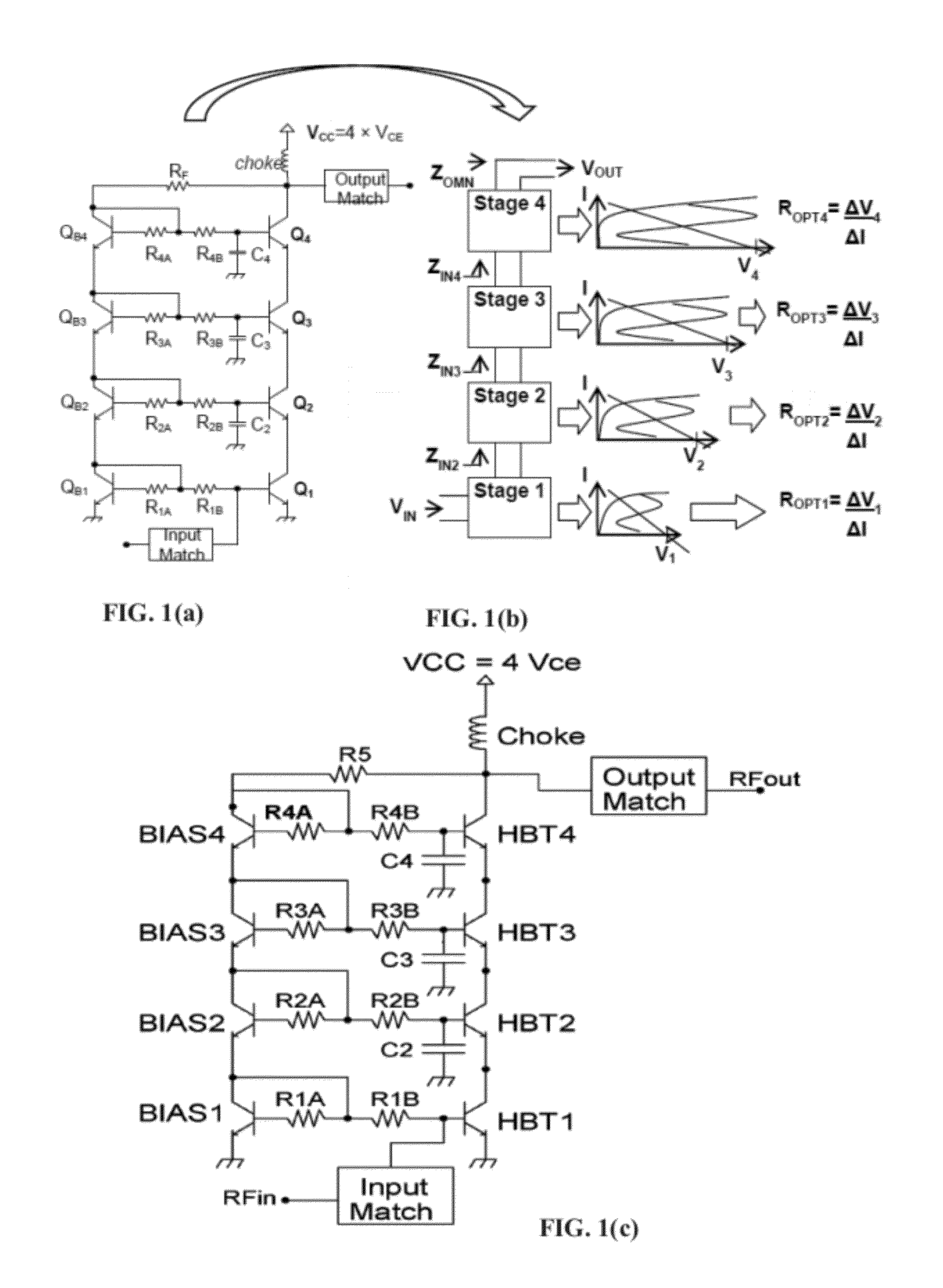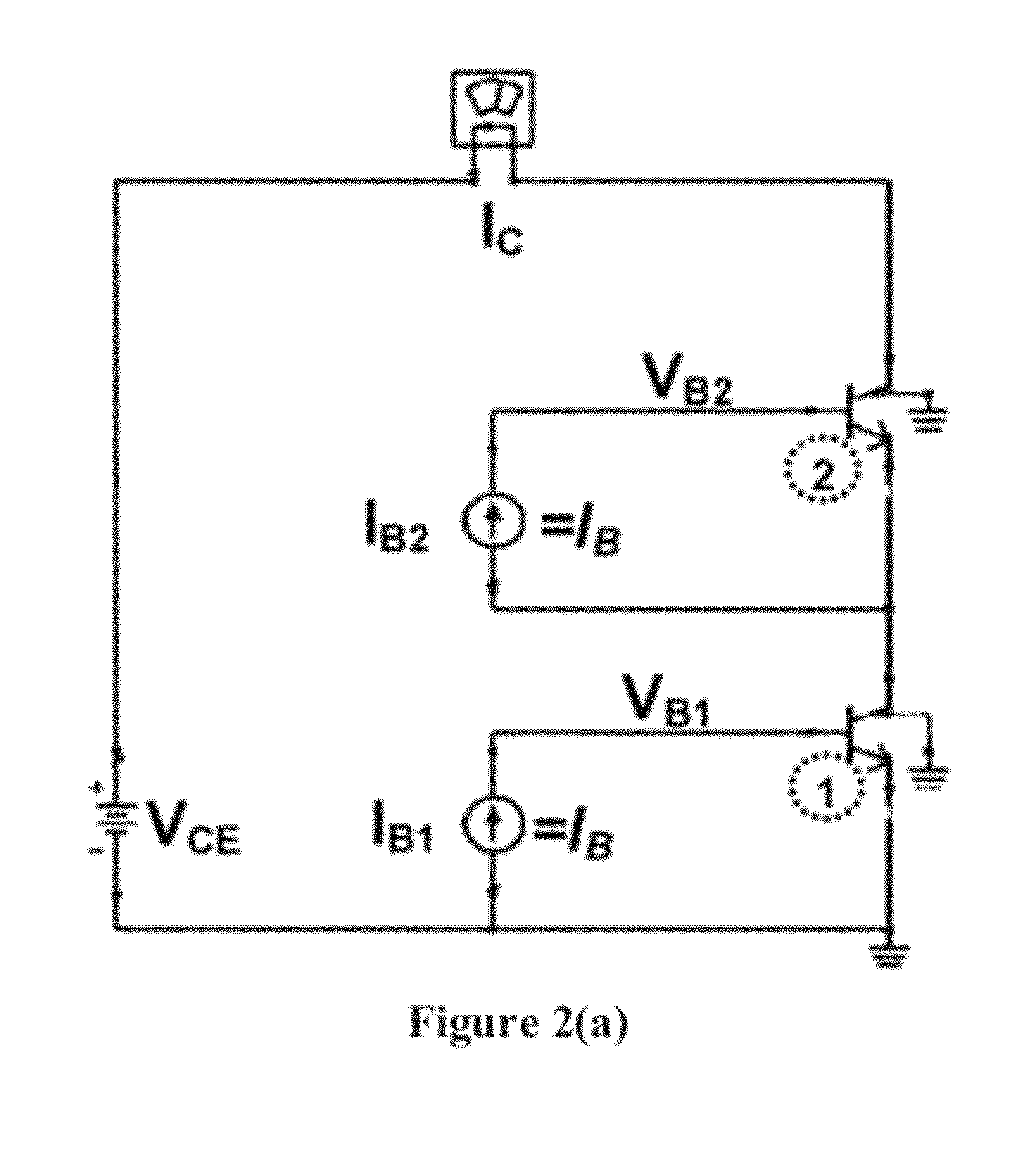Bipolar stacked transistor architecture
a technology of bipolar transistors and transistors, applied in the direction of amplifiers with multiple amplifiers, amplifiers with semiconductor devices only, amplifiers with semiconductor devices, etc., can solve the problems of reducing rf output power, reducing the distance between transmitters, and remained expensive, so as to prevent the breakdown of bipolar devices and reduce the negative rf feedback to amplifiers.
- Summary
- Abstract
- Description
- Claims
- Application Information
AI Technical Summary
Benefits of technology
Problems solved by technology
Method used
Image
Examples
Embodiment Construction
[0030]In describing the preferred embodiments of the present invention illustrated in the to drawings, specific terminology is resorted to for the sake of clarity. However, the present invention is not intended to be limited to the specific terms so selected, and it is to be understood that each specific term includes all technical equivalents that operate in a similar manner to accomplish a similar purpose.
[0031]The implementation of FIGS. 1(a), (b) use a stack of four Bipolar Transistors, Q1-Q4. Q1-Q4 are identical in emitter area size. The supply voltage (VCC) is set to four times a single transistor's supply voltage (VCE) or bias value. The Bipolar transistor labeled QB1, along with resistors R1A and R1B, serves as a ratioed current mirror for bipolar transistor Q1; this is true for QB2-4 for Q2-Q4 as well. Resistor labeled: RF serves a dual purpose: negative feedback and variable DC bias control. As the RF output signal swings up and down, resistor, RF changes the reference cur...
PUM
 Login to View More
Login to View More Abstract
Description
Claims
Application Information
 Login to View More
Login to View More - R&D
- Intellectual Property
- Life Sciences
- Materials
- Tech Scout
- Unparalleled Data Quality
- Higher Quality Content
- 60% Fewer Hallucinations
Browse by: Latest US Patents, China's latest patents, Technical Efficacy Thesaurus, Application Domain, Technology Topic, Popular Technical Reports.
© 2025 PatSnap. All rights reserved.Legal|Privacy policy|Modern Slavery Act Transparency Statement|Sitemap|About US| Contact US: help@patsnap.com



